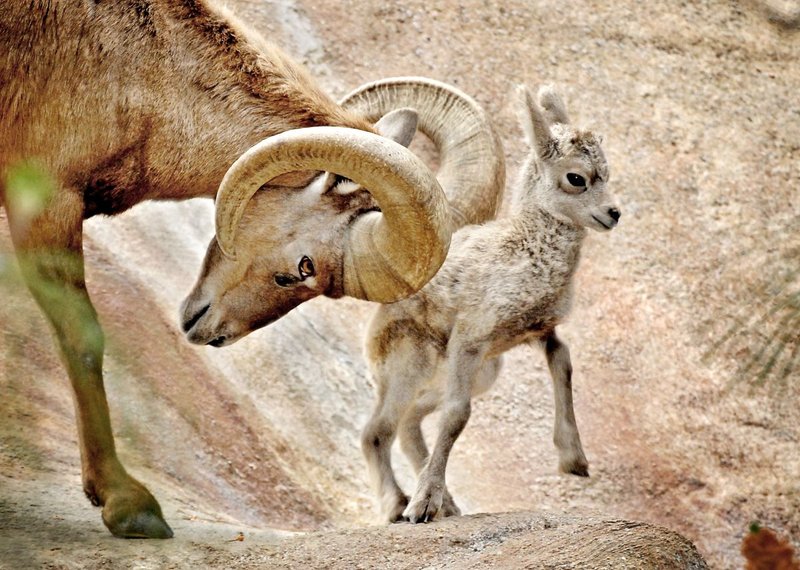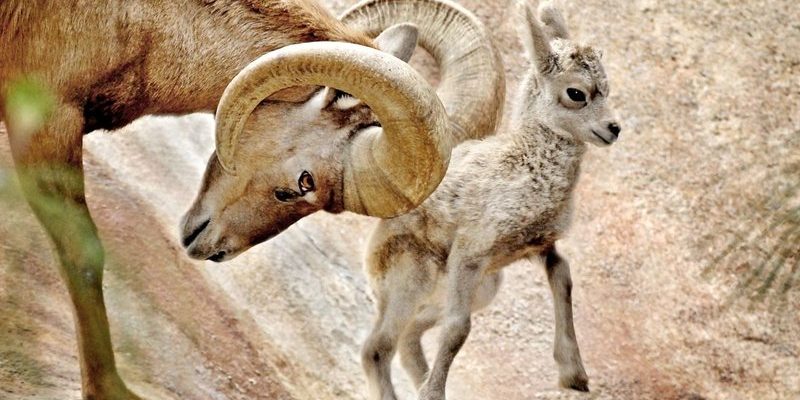
Think of a mother Bighorn sheep as a dedicated coach, leading her young lambs through the ups and downs of life in the wild. From navigating rocky landscapes to finding food, every day is a new adventure. With their strong social structures and survival instincts, Bighorn sheep offer a fascinating glimpse into how wildlife raises its young in harsh environments. Let’s dive into the heart of their nurturing methods and learn what it takes for these remarkable animals to thrive in the wild.
The Life Cycle of Bighorn Sheep
Understanding how Bighorn sheep raise their young starts with knowing their life cycle. Bighorn sheep typically live in herds, which provides social support and protection. The females, known as ewes, usually give birth to one lamb per year, typically in the spring when food is abundant. This timing is crucial, as the lambs need plenty of nutritious grass and plants to grow strong.
Once a lamb is born, it’s not just a cute addition to the herd—it’s a vulnerable creature. They weigh between 10 to 15 pounds at birth and are surprisingly mobile, able to walk and run within hours. This quick development is vital since predators like mountain lions and coyotes lurk nearby, always waiting for an opportunity. The first few months of a lamb’s life are packed with learning and adaptation, often guided by their mothers and the rest of the herd.
Motherly Guidance and Protection
Here’s the thing: Bighorn sheep mothers take their role seriously. Ewes spend a lot of time caring for their lambs, teaching them how to navigate the challenging environment. They lead their young to safe feeding areas, often climbing steep, rocky terrains where they can find nutritious plants. This guidance is crucial for the lambs’ survival.
During the first few weeks, a mother will keep her lamb close, often nursing it several times a day. She provides not only food but also warmth and comfort. In the wild, there are hazards everywhere, so the mother must be vigilant. If she senses danger, she’ll often group her lambs together, making it harder for predators to pick them off. This instinctive behavior showcases the deep bond between mother and offspring.
Learning Through Play
Lambs learn a lot through play, which is essential for their development. You might be wondering how this happens in the rugged mountains. Well, Bighorn lambs engage in playful antics that might look like a frolic in the fields. They practice jumping, climbing, and even butting heads, mimicking the adult males as they build strength and coordination.
This playful behavior isn’t just for fun; it’s also a critical way of learning survival skills. For instance, when lambs play chase, they develop speed and agility, which will come in handy when escaping from predators. Think of it as a natural form of training, preparing them for the realities of wild life.
Establishing Social Bonds
Bighorn sheep are social animals, and their social structure plays a pivotal role in raising young. Ewes often form strong bonds not only with their lambs but also with other females in the herd. This social support system allows mothers to share the responsibilities of caring for the young. When one ewe is busy, another can keep an eye on the lambs, ensuring they’re safe.
You might think of it like a neighborhood watch—everyone looks out for each other. This camaraderie helps strengthen the entire group, promoting a sense of community that’s vital for survival in the harsh mountain environment. The more eyes watching over the lambs, the better their chances of growing into strong adults.
Overcoming Challenges Together
Raising young in the wild isn’t without its difficulties. From harsh weather conditions to the constant threat of predators, Bighorn sheep face many challenges. Mothers must navigate these obstacles while ensuring their lambs are safe and healthy. This sometimes means moving to higher altitudes where the weather is more favorable or finding new feeding grounds when resources become scarce.
Sometimes, ewes must make tough decisions, such as leaving a sick lamb behind to ensure the safety of the others. It’s a heartbreaking part of wildlife, but it’s also a necessary one for the species’ overall survival. These challenges highlight the resilience of Bighorn sheep and the instinctive drive to protect and provide for their young.
The Transition to Independence
As lambs grow, they eventually reach a point of independence. By the time they are around 6 months old, they start to eat solid food, similar to what adults consume. It’s during this period that they become more adept at climbing and foraging for themselves. The mother begins to distance herself slightly, allowing the lamb to explore more on its own.
While the transition can be bittersweet, it’s a crucial step in the lifecycle of Bighorn sheep. Lambs need to learn how to navigate their world, and the mother’s gradual withdrawal helps instill confidence and independence. This period marks the beginning of their journey toward adulthood, where they will eventually contribute to the herd in their own way.
Raising young in the wild is a remarkable journey filled with challenges, triumphs, and a whole lot of love. Bighorn sheep mothers embody the essence of nurturing in the animal kingdom, guiding their lambs through lessons of survival, play, and social bonding. Each step is a crucial part of a larger process that ensures the continuation of their species.
As we observe these majestic creatures, we gain insight into the delicate balance of life in the wild. The resilience of Bighorn sheep and the strong connections they share remind us of the importance of community, nurturing, and the will to survive, no matter the odds. It’s a story of nature’s elegance, resilience, and the fierce commitment to raising the next generation.

